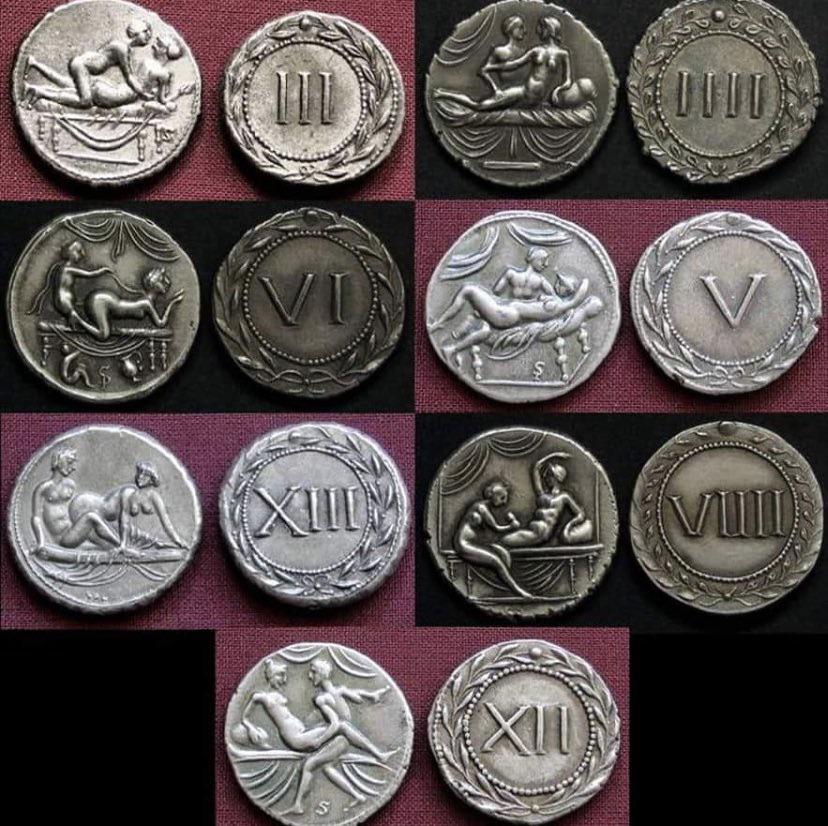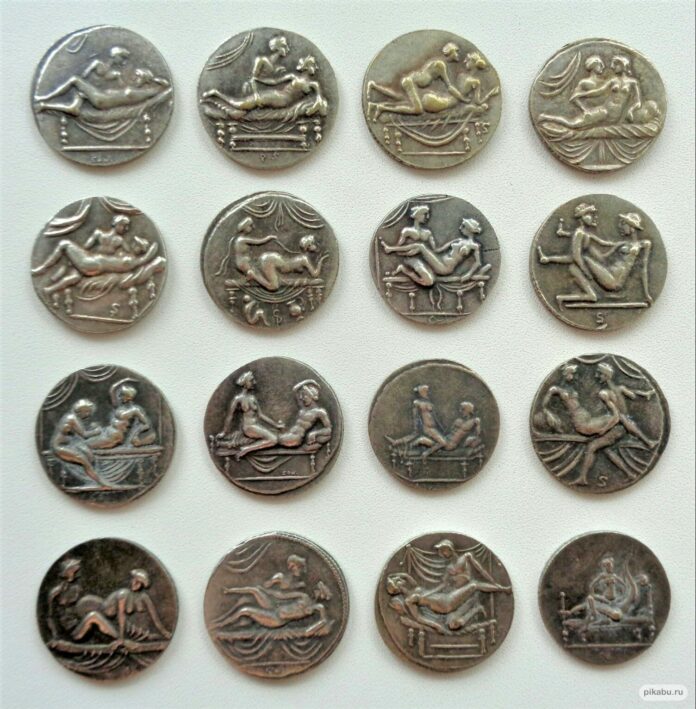While much of the daily life and cultural practices of the ancient Roman Empire have been well-documented, there remains one class of Roman artifacts that continues to puzzle historians and archaeologists – the spintriae. These small bronze or brass tokens, typically measuring between 18-25 millimeters in diameter, bear mysterious imagery and numerical markings that have sparked debate and speculation for centuries.

The obverse (front) of a spintria usually depicts some form of sexual imagery, ranging from explicit scenes of copulation to more symbolic erotic motifs. The reverse side features a numeral in the range of I to XVI, which has led many to believe these tokens may have been used as a form of currency or scrip in Roman brothels. However, the lack of definitive historical evidence makes the exact purpose and function of the spintriae highly uncertain.
Spintriae have been found in archaeological sites across the Roman world, from Britain to North Africa, suggesting these tokens were relatively widespread, though not necessarily common. The earliest known examples date back to the reign of the emperor Tiberius (14-37 AD), with the majority believed to have been produced during the 1st and 2nd centuries AD.

Some scholars have theorized that the spintriae may have served as admission tickets, tallies, or tokens of exchange within the Roman sex trade. The erotic imagery could have been used to discreetly advertise the services available, while the numbers may have corresponded to different sexual acts or denoted the cost of those services. However, there is no conclusive proof to support these hypotheses.
An alternative view is that the spintriae were not directly associated with prostitution at all, but rather served as gaming tokens, possibly for use in gambling or as prizes. The numerical values on the reverse could have represented points, bets, or odds related to some type of game or wager. Others have suggested the spintriae may have been used for ritual or religious purposes, perhaps as devotional objects.

Ultimately, the true purpose and significance of the spintriae remains an enduring mystery of the Roman world. What is clear is that these small, provocative tokens offer a tantalizing glimpse into the private lives and cultural mores of ancient Roman society. As with many artifacts from the classical period, the spintriae invite more questions than they answer, challenging us to piece together the nuances of life in the Roman Empire.
In the absence of definitive historical records, the spintriae continue to capture the imagination of scholars and the public alike. These enigmatic tokens serve as a reminder that there are still many untold stories and hidden facets of the ancient world waiting to be uncovered and understood.
